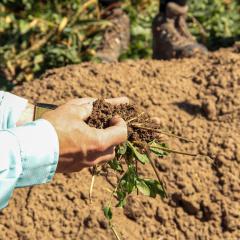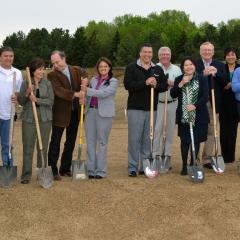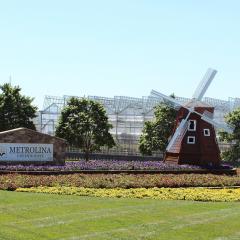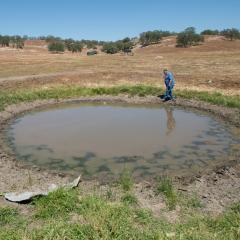Education and Teaching Materials
Alaska Curricula for Conservation Planners
These training materials are intended for use by partners, Soil and Water Conservation District staff, Tribal Conservation District staff, NRCS employees who are pursuing a conservation planner certification. They are also useful educational resources for the public.
Biology of Soil Compaction
This document describes the biology of soil compaction and how USDA-NRCS can help producers fight and reverse compaction.
Block Diagrams
Locator map and list of block diagrams from published soil surveys.
Caribbean Pollinators Publications
Posters, factsheets and other publications about pollinators from our Caribbean Area Ecological Sciences Division.
Climate Glossary
A glossary of terms commonly used in climate science.
Conservation Finance at NRCS
Conservation finance is an emerging sector that seeks to find new financial vehicles and approaches to attract funding to conservation.
Conservation Planning Brochure and Fact Sheet
Read about the history, purpose and goal of Conservation Planning.
Conservation Trees and Shrubs for Montana
This guide is designed as an aid for planting trees and shrubs in Montana. It can be used to select plants for windbreaks, riparian plantings, recreation, and wildlife plantings, ornamental or environmental plantings, reforestation, and critical area plantings.
Conservation Webinar Portal
The Conservation Webinar Portal (NRCS Science and Technology Training Library) is a free multi-disciplinary training and extension webinar platform.
Cover Crop Tips - Montana
Cover crop is one of the tools that agricultural producers can use to improve soil health. Cover crops have traditionally been used to reduce erosion or add nitrogen to soil. But they do even more.
Defining LRR, MLRA, and LRU
Definitions for Land Resource Region (LRR), Major Land Resource Area (MLRA), and Land Resource Unit (LRU).
Delaware NRCS Conservation Newsletters
View the latest conservation news and updates from Delaware NRCS.
Delaware NRCS Publications & Fact Sheets
Read the latest Delaware NRCS publications and fact sheets to learn how NRCS and farmers and landowners can work together to improve agricultural operations while helping the environment. (Note: All publications can be viewed using Adobe PDF unless otherwise stated.)
Dynamic Soil Properties for Soil Health – #DSP4SH
Through the Science of Soil Health initiative, cooperators are collecting dynamic soil properties (DSPs). A common set of soil health metrics will be collected across regions and soils and linking the information gathered to soil survey DSP databases and products.
Environmental Markets at NRCS
Environmental markets are an approach that can be used to help landowners get conservation on the ground. While NRCS has substantial funding to dedicate to private lands conservation, environmental markets complement NRCS’s work by bringing private and other non-Federal investments to private lands.
Guide to Pronouncing Taxonomic Terms
This guide presents a list of terms (in alphabetical order) that are used in Soil Taxonomy along with other terms used to describe soils.
History of Wisconsin Soil Survey
The year 2006 marked the completion of the initial field mapping for the National Cooperative Soil Survey in Wisconsin. This publication recognizes the agencies and individuals who have invested time, funding, and manpower in the initial field mapping of the state over the last 100 years or so.
How to Protect Livestock from Harmful Algal Blooms (HABs)
Freshwater harmful algal blooms can produce toxins that are harmful to humans, livestock, working animals, and pets. NRCS has several conservation practices that may be useful in protecting animals and people by restricting access to contaminated water or providing alternate water sources.
Java Newhall Simulation Model (jNSM)
A traditional soil climate simulation model.










